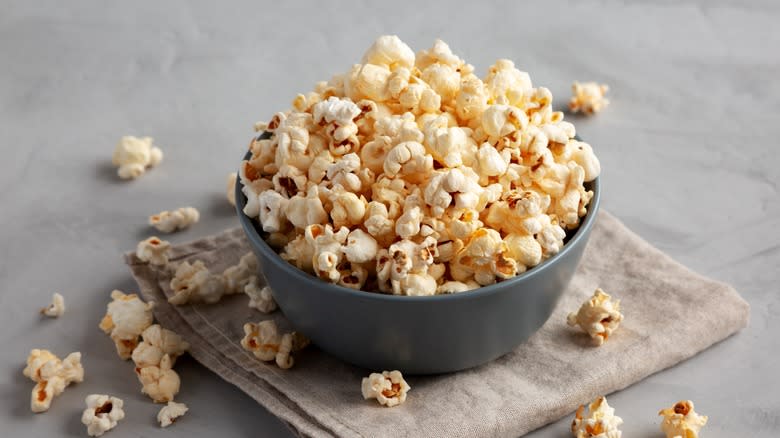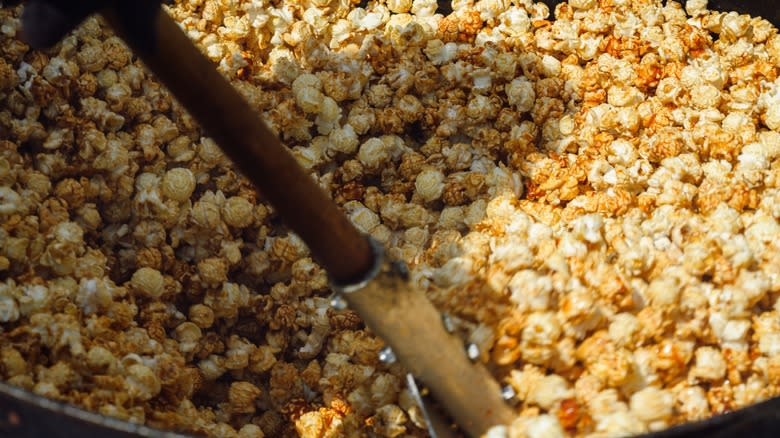The Disputed Origins Of Kettle Corn

For many, the sweet and salty flavors of kettle corn evoke childhood memories of fairs and festivals spent snacking on the treat. Even if you don't have that nostalgic connection to kettle corn, you've likely tried the crunchy popcorn at least once in your life. No matter which camp you're in, the question remains: Where was this snack invented hundreds of years ago?
Popcorn walked so kettle corn could run — to dig into the history of kettle corn, we must travel back to Mexico to the origins of popcorn over 5,600 years ago. Corn had been cultivated for years in this region, and one of its earliest iterations was popping. Popcorn was a staple food here used for both nutrition and performance (in the form of accessories). Eventually, European explorers brought the food back across the ocean and, over time, the snack made its way East; this is where the divide in history begins.
Some say that kettle corn was invented by the Dutch in the 17th century, while others claim its birthplace as 18th century Germany. Definitive facts are elusive, but kettle corn came out the same either way. At the time, kettle corn was usually cooked over an open flame in leftover lard (not butter or oil) and was sweetened with honey, molasses, and sometimes sugar. Traditionally, the kernels were popped in a cast iron kettle (hence the name) or a Dutch oven.
Read more: 25 Most Popular Snacks In America Ranked Worst To Best
Kettle Corn Is Still Beloved Today

Though the relevant primary accounts are difficult (if not impossible at this point) to find, it's rumored and generally believed that kettle corn is mentioned in Pennsylvania Dutch settlers' diaries around the 18th century. As such, history has labeled these settlers as the first people to bring the sweet treat to the Americas. Throughout the 19th century, kettle corn grew in popularity and remained prevalent, at least until the Civil War. Sometime around the turn of the 20th century, however, kettle corn fell from its snack pedestal and wouldn't really be seen again until nearly 100 years later in the 2000s, as modern Civil War reenactments and other "olden times" festivals grew in popularity around the country.
Kettle corn has remained a classic treat and can be found in numerous places, including Renaissance fairs, flea markets, farmer's markets, and sports and movie concession stands. The recipe for the treat, while still simple, has changed quite a bit. Today, lard has been replaced with oil, and honey has been all but replaced by sugar. Cast iron is still the foremost material used in commercial kettle corn production, but at-home kettle corn cooking can be done with any number of pots and pans. One similarity remains: sugar will still burn quickly, so watch your pot carefully to avoid wasting your precious kettle corn.
Read the original article on Tasting Table.


